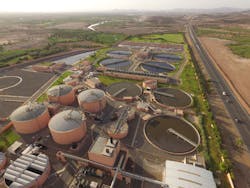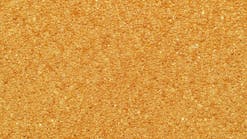Remaining suspended solids are coagulated and filtered using sand filter beds, and then disinfected using a combination of Ultraviolet (UV) treatment and chlorination to eliminate the remaining bacteria. Once this step is complete, the water is ready for reuse and pumped into the irrigation system. The Marrakech wastewater treatment plant allows 30 million cubic metres of water to be reused for irrigation.
Sludge digestion occurs throughout all three stages of the treatment process, and makes possible the production of biogas. This is stored in methane tanks and fuels a cogeneration unit consisting of four engines, producing enough green electricity and heat to power up to 45 percent of the plants energy needs.
A plant for solar drying of the digested and dewatered sludge is still under construction near the digestion site. Each year, more than 75 tons of digested sludge will be turned by robots in large greenhouses, using vaporization to increase dry matter content from 22 percent to up to 80 percent. In order to reduce impact for workers on site and for neighboring inhabitants, 80.000 Nm³ of air/hour are treated. Volatile Organic Compounds and odors are treated using bio-filters and bio scrubbers.
The Marrakesh wastewater treatment plant covers 17 hectare, and is the largest and the first integrated WWTP in Morocco to implement wastewater treatment, sludge digestion and sludge solar drying, water reuse as well as air treatment. It is a model of sustainable development not only for Morocco itself, but for the entire region.
Ryan Johnston is the business development manager at Waterleau USA.
More Water & WasteWater International Current Issue Articles
More Water & WasteWater International Archives Issue Articles


